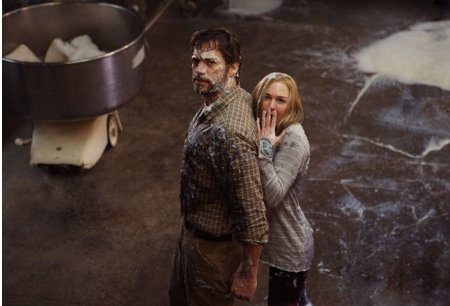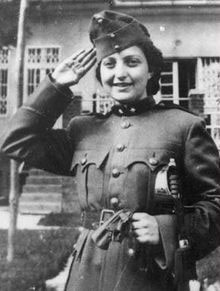
In 2006, the critic David Edelstein confirmed his cinematic cowardice by asking this of the infamous nine-minute anal rape scene in Gaspar Noé’s Irreversible, “Noé means to rub your nose in the violence and make you loathe it, but my nose had been pretty well rubbed after the first two minutes. For a while I stared at the EXIT sign, then closed my eyes, plugged my ears, and chanted an old mantra. I didn’t understand why I had to be tortured, too. I didn’t want to identify with the victim or the victimizer.”
I don’t believe that the torture porn issue should especially concern itself with the filmgoer’s rights. In the case of Irreversible, Noé draws our attention to the horrible reality of rape through his unique structure — ten-minute installments arranged backwards, with the “later” events happening first — and by demonstrating how these “later” actions reveal primal motivations that occurred “earlier.” Much as Almodovar had the courage to play a twelve-minute rape scene in Kika for laughs, Noé is interested in suggesting to the filmgoer that our quotidian gestures may very well be laced with savagery. And if the filmgoer feels uncomfortable with this ethical question, he has the option to walk out of a theater if he cannot handle what’s presented before him.
If cinema is to endure as an art form, then it must permit opportunities for the filmgoer to enter into uncomfortable territory. Perhaps Edelstein would have been better off writing about the latest audience-pandering “art-house film” that refused to take chances. His viewing concerns fail to consider the film on its own terms. It is, instead, all about Edelstein, and such attitudes are damaging to films that play fast and loose with comfortable sensibilities.
The torture porn question hinges less on the content and more on whether a film can offer a convincing portrayal of dirty human realities. Let us consider Eli Roth’s oeuvre. This horror auteur displayed some primitive satirical promise with Cabin Fever and Hostel, only to betray this talent in Hostel: Part II with one of the most misogynistic scenes seen in a horror film in years.
In Hostel: Part II, Heather Matarazzo is punished for being eager, geeky, and curious about the Slovakian village which contains the factory in which affluents pay to torture and kill victims. Roth has children spit in Matarazzo’s face when she offers a mint. Her friends lie about the alcoholic content of the cider she drinks. (Matarazzo’s character does not drink.) Whereas even the asthmatic in the first film got some action, in the second film, Matarazzo isn’t even given a chance to get laid — even when she goes on a boat ride with a schlumpy guy. She’s abducted to the torture factory, and doesn’t even get so much as a kiss. The kiss comes later, when she is dangling upside down — naked, chained, humiliated for the camera, essentially raped by the schlumpy guy. Indeed, the schlumpy guy fires up a cigarette just before the torture factory staff bags her head. His breath, polluted by the phallic cigarettes, won’t even partake in an embrace.
And that’s just the beginning. Roth doesn’t even give Matarazzo a moment in which she can upbraid her two companions or display any strengths. She’s a character who exists to be mocked and tortured. She dangles from the ceiling, her breasts bobbing at the top edge of the frame like some cheap chandelier, and another woman — the client who has requested her — proceeds to scrape her skin with a blade, with the camera lingering on Matarazzo’s flesh in full closeup. Torture soon follows, with Matarazzo cut open, screaming, and the blood dripping down onto the nude client’s body. There is nothing remotely ethical or particularly probing about this scene, even if one accepts that it’s “just a movie.” It is cheap, exploitative, incurious about the human condition, and not particularly interested in exploring the relationship between the tortured and the torturer. Matarazzo’s body is presented, but it’s all in the interest of misogyny. And while Roth has another woman cut a client’s dick off near the end of the film, as if to suggest that emasculation represents a kind of female empowerment, the brutal cheekiness (a dog chows down on the cock just after it is thrown across the room) adds nothing particularly substantial to the revolutionary possibilities of the horror genre, much less the talent that Roth displays in other scenes (such as the DePalma-like torture bidding, split-screen montage seen early in Hostel: Part 2).
* * *
Which brings us to Oliver Blackburn’s film, Donkey Punch, part of the Magnet “Six Shooter” series, which has clearly taken Eli Roth’s two Hostel films as its inspiration. Here again is a film presenting spoiled young people going on vacation, taking everything without giving back, and getting lost in gruesome violence. “Check it out,” says one character of the boat in which the action takes place, “It’s, like, the TARDIS.” Like the Matarazzo dilemma in Hostel: Part 2, geekdom resides just under the surface, but it is actively discouraged. Dare to be thoughtful, curious, intelligent, or abstain from drugs, and you will be punished. For it is the vacationer’s duty to be dumb and irresponsible in these films.
Here again is a film that replaces even the crudest concern about the human condition with boorishness and misogyny. Three young women join four young men on board a boat. And what is the allure exactly? This film is too idiotic to pin it on anything more complicated than a vacationer’s crude pursuits of debauchery. These Bacchanalian impulses don’t stop Blackburn from giving his women the Matarazzo treatment. The three women wander about the boat and note that it “smells of boy.” The titular “donkey punch” is a sexual position that involves punching the woman on the back of the head during orgasm. It’s brought up by the marble-mouthed thug Bluey — the stupidest and cruelest character in the movie, and the big “experienced” man who the other three look to for guidance. “What’s in it for the girl?” asks one of the women. The reply? “I don’t understand the question,” followed by selfish laughter.
The donkey punch is carried out. A woman dies. The action is caught on a video camera: a vacation snapshot that transforms into a lucrative Internet possibility (just like Elite Hunting in the Hostel films, which offered a business card with merely an email address). And, of course, the man who caused the death can’t take responsibility. Nor do these characters make any attempt to calm each other down. “Why don’t you fix us a meal?” orders one of the young men later in the film. The object is to evade the police and to carry on with the partying, and to make sure that these “bitches” stay down. After all, they had it coming.
More forgiving critics are likely to defend Donkey Punch as “a cautionary tale.” But this too easily exculpates both the filmmaker and the filmgoer from the failure to find a purpose, or a common territory, for the violence. This is most certainly an exploitation film, but it lacks the chops to get us interested in these characters on a rudimentary level. The film’s setting suicidally, and rather stupidly, begs comparisons to Knife on the Water and Dead Calm, which are both considerably better.
Neither Donkey Punch nor Hostel: Part 2 offers anything half as interesting as Abel Ferrara’s 1979 Driller Killer (which is available online for free; the film is in the public domain). Ferrara’s feature debut is a structural mess, and he hasn’t quite found his voice. (That would come later with his first masterpiece, Ms. 45.) But he does depict madness and violence in a way that draws us into the madman’s psychology. The film’s later scenes of the madman drilling people around New York works both as exploitation, and as a very unusual examination of class and art vs. consumerism. We can observe the violence as horrifying, fun, pleasant, and unpleasant. And that is because Ferrara is genuinely curious and passionate about his warped madman (so much so that he played the part). The violence caused the film to be labeled a “video nasty” when it hit the UK.
Now the new label is “torture porn.” But filmmakers such as Blackburn and Roth aren’t really interested in tinkering with the stigma. Instead of using their freedom and their notoriety to advance cinematic form and mess with heads — as Noé and Takashi Miike’s films often do — they prefer to wallow in misogyny for misogyny’s sake. Their “daring” choices become childish and predictable, and it becomes evident that a flapping penis (and there are many in Donkey Punch) is less about flaunting conventions and more about crass commercialism. This kind of filmmaking stance isn’t courageous. It’s riddled with cowardice and contempt. It performs a great injustice to the horror genre, which, in the best of hands, can be fun, thoughtful, and dangerous.


